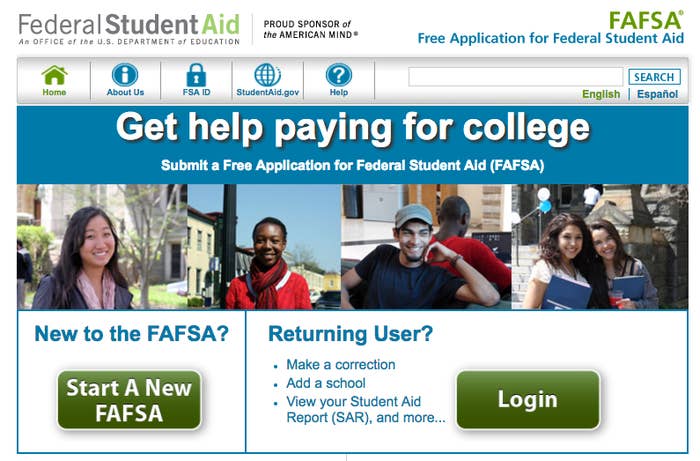
A government tool built to make it easier for students to access financial aid and debt relief was recently taken offline during the peak of financial aid season, potentially hurting millions of students.
Student advocates say the removal of the tool, which was built into the Free Application for Federal Student Aid (FAFSA), will inevitably harm low-income students, especially those who lack sufficient support from their parents and schools.
The tool allowed students to import tax information directly into the FAFSA and government loan repayment forms, error-free, rather than having to scrounge up old tax documents and manually enter the information. Now, an application process that took less than a half hour could stretch over days or weeks, depending on the time required to collect the necessary tax forms. Such delays could ultimately cost students thousands of dollars in need-based financial aid and grants, and cause others’ monthly federal loan payments to jump up sharply.
“For a lot of low-income people the process of applying for aid just got a lot more daunting and time-consuming,” said Lauren Asher, the president of the Institute for College Access and Success. The disappearance of the tool, Asher said, “adds a tremendous additional burden that will make it less likely that some students get financial aid.”
The tool, developed in 2010 by the Education Department and the IRS, was the key piece in a broad bipartisan effort to make applying for federal financial aid and loan relief simpler and more accessible to low-income students.
When it was taken off the FAFSA site without warning early in March, the IRS blamed security concerns, saying that it was taking a precautionary step and that the tool could have been used to steal taxpayers’ identities. The tool opened up access to an applicant's adjusted gross income for the previous year — a number that the IRS also uses as a password of sorts to access sensitive tax data.
Neither department has offered an explanation for the timing of the takedown, or why it is expected to take months to restore. The agencies first said it would be brought back within weeks, but the Education Department said last week that the outage could last into the fall.
For some, the loss of the tool came at a serious cost. Sara Morgan, a college adviser at the Academic Success Program of Dallas, has seen the removal of the tool cause a cascade of problems for her students, many of whom are low-income and first-generation college students.
“It’s really adding a lot of stress,” Morgan said.
Some of Morgan’s students have made serious errors that the IRS’s tool would likely have prevented — accidentally listing their parents’ income as $450,000 a year, in one student’s case, instead of $45,000, meaning she was initially not eligible for any financial aid. Another entered her mother’s information twice, making it appear that the student, too, had worked a full-time job, which curbed her financial aid offer.

But the biggest consequence of the tool disappearing, Urdiquez said, has been the increase in students whose applications are flagged for additional vetting — a time-consuming, demanding process that requires them to submit reams of extra documentation of everything from tax transcripts, which can take weeks to arrive, to proof of siblings’ college attendance.
The vetting process can be complex and daunting enough, reports have found, to turn students off of applying for financial aid altogether; some think being vetted means that they have been rejected.
The long delays also mean students risk losing access to financial aid. In Texas, state grants for needy students are awarded on a first-come, first-served basis — and they’ve already run out for this year, Urdiquez said, meaning some of her students who are still backlogged in verifying their financial aid forms have lost out on $5,000 in grant money.
And the outage has also affected the tens of thousands of people currently enrolled in the federal government’s income-based repayment plan, which sets student loan repayments at a fixed percentage of monthly income. The plan requires students to re-enroll every year by submitting tax information, and if they don't re-file, they risk a sharp jump in their monthly payments.
Tiffany Jones' monthly student loan payment more than tripled after she missed a deadline to submit her income-based repayment application several months ago. With the IRS tool now down, she has spent weeks assembling the paperwork she needs — all with the threat of an unmanageable loan payment hanging over her head.
Jones' day job is working with high school seniors, guiding them through the college application and financial aid process. Some of her students, she said, "are at a real disadvantage" now that the tool has gone offline. "It's very strenuous for them," she said.
It has been strenuous for Jones, too. While she finds the paperwork she needs, she has had to put her loans into forbearance. "I have had to go and find a whole slew of documents to show my income," she said.
CORRECTION
Sara Morgan is a college adviser at the Academic Success Program of Dallas. An earlier version of this article gave her name as Sara Urquidez.
